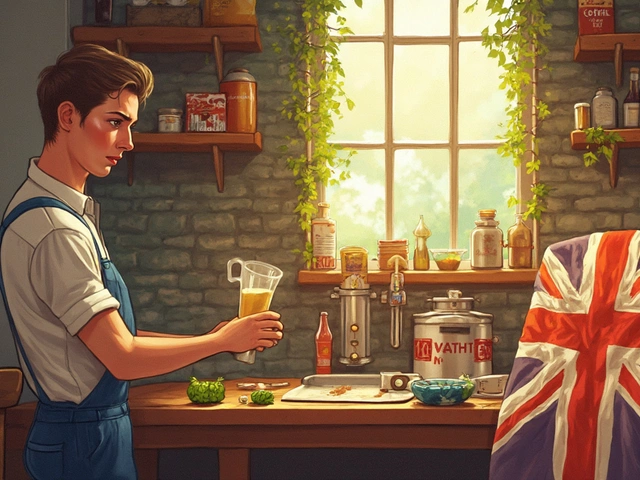Cowboy Beer: Your Guide to Bold Western Brews
If you’ve ever imagined a drink that smells like desert air, fresh‑cut wood, and a hint of campfire smoke, you’re thinking about cowboy beer. It’s not a specific brand but a style that captures the rugged spirit of the Old West. Think amber or copper‑colored ales with a solid malt backbone, a modest hop bite, and sometimes a touch of spice or smoked malt to give that ‘out‑on‑the‑range’ feel.
Most cowboy beers sit in the mid‑strength range – roughly 4.5% to 6% ABV – so you can enjoy a few without feeling like you’ve been riding a herd of mustangs. The color usually leans toward amber, with a frothy, creamy head that stays put longer than a light lager. If you spot notes of caramel, toffee, or even a faint cocoa whisper, you’re on the right track.
How to Taste a Cowboy Beer Like a Pro
Start by looking at the glass. A clear, wide‑rimmed tumbler shows off the beer’s hue and lets the aromas flow. Swirl gently, then take a quick sniff – you should catch malt sweetness, a hint of earthiness, and maybe a subtle smokey edge. Take a small sip, let it roll over your tongue, and notice the balance between malt and hop. Does the bitterness cut the sweetness just enough? A good cowboy brew will finish clean, leaving a warm, slightly sweet aftertaste that’s perfect for a night around the campfire.
If you’re new to this style, try pairing it with classic western foods. Grilled steak, smoked brisket, or a hearty chili all complement the malt depth. Even a simple cheese board with cheddar, smoked gouda, and a dash of pepper jack works wonders. The goal is to match the beer’s robustness without overpowering it.
Finding and Making Your Own Cowboy Beer
Looking to buy? Check out craft breweries that market “western” or “frontier” ales – they often label them as cowboy, trail, or pioneer beers. If you love the idea of scouting the number one beer in the world (see our post on global beer rankings), you’ll find that many top‑ranked brews share the same bold character as cowboy ales.
For the DIY crowd, brewing a cowboy beer isn’t rocket science. Start with a base malt like 2‑row or pale malt, add a modest amount of crystal malt for caramel notes, and consider a small portion of smoked malt for that campfire effect. Hop selection should be low‑to‑mid bitterness – something like Cascade or Willamette works well. Finish with a clean yeast strain to let the malt shine.
Remember, water matters. Use water with a slight mineral content to enhance the malt sweetness. Ferment at 65‑68°F (18‑20°C) for a clean profile, then let the beer condition for at least two weeks before tasting.
Whether you’re sipping a ready‑made cowboy brew at a local taproom or brewing your own, the key is to appreciate the simplicity and rugged charm it brings. It’s a reminder that good beer doesn’t need fancy gadgets – just honest ingredients and a love for the open range.
Step back in time, to the rugged days of the Wild West, exploring the kind of beer that cowboys enjoyed after their long days on the trail. Discover the influence of German immigrants, the rise of brewing in the American frontier, and how these historic concoctions live on today. See how modern festivals celebrate this unique heritage, offering a taste of history with every sip. This journey reveals the blend of authenticity and innovation that has kept cowboy beer alive through the ages.
View Details
